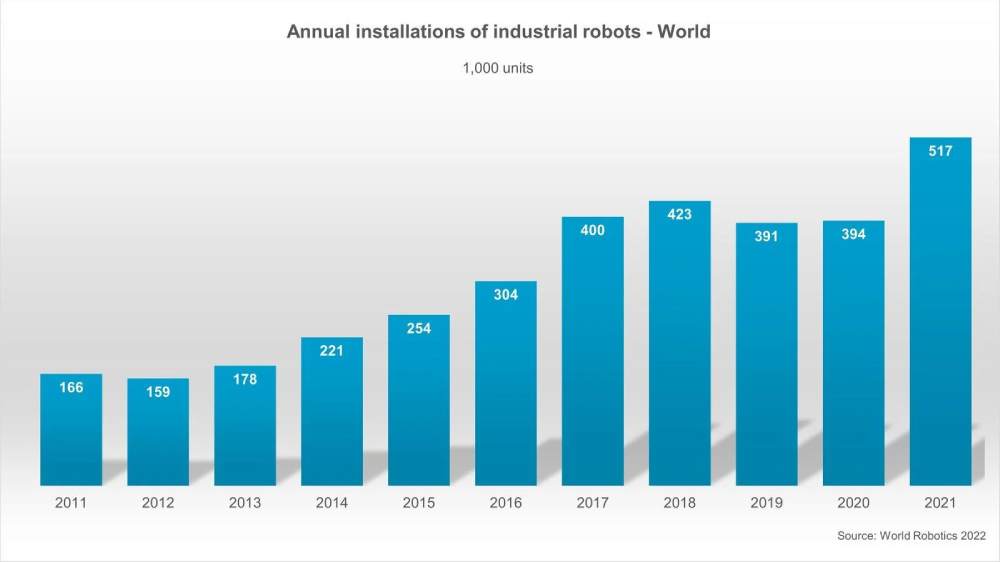News Spotlight
Robots are developed, put to work in Finland
Elias Robot enables people to study languages by having conversations with humanoid robots.
Elias Robot / TwitterFinnish companies have come up with ways to use robots to advance waste sorting, enhance language learning, improve safety in mines, and fulfil food and meal orders.
Kuljetusrinki, a company in charge of handling large amounts of waste in Helsinki, in September reported that it has ordered an automated line for sorting construction and demolition waste from ZenRobotics.
The AI-powered robots manning the line will be able to sort clean, processed and pressure-treated wood; non-magnetic metals such as aluminium, brass, copper and stainless steel; hard plastics such as polythene and polypropylene; and rock materials at a pace of over 100 items per minute or 6 000 items per hour.
All fine and light materials are separated from the waste before the waste is fed to the robots at a steady pace. The robots are capable of functioning independently around the clock.
“Robots make working safe,” arguedSami Aro, foreperson at Kuljetusrinki. “We are investing a lot in this because safety also represents efficiency. Our entire work community is very proud of our decision to acquire this newest piece of technology. Who would not want to work at a company where artificial intelligence-powered robots do the dirty, mundane and dangerous work?”
Jukka Aro, board chairperson at Kuljetusrinki, pointed out that a high degree of recycling, high energy efficiency and carbon-dioxide emission reductions are important to both the company and its customers.
“With this investment, we are helping our customers to improve the degree of recycling in their waste management, to reduce emissions and to meet the recycling targets of the EU,” he said.
Food robots get a grip
One company redefining what is possible with robots is thtRobotics. The Finnish-Norwegian startup recently announced two milestones for its gentle robotics technology: the closing of a pre-seed funding round worth 350 000 euros and a proof-of-concept deal with an unnamed “major” meal kit company.
The startup has developed a solution that enables robotic systems to grip like humans, thereby expanding the scope of operations that can be automated. The solution is able to handle objects of different size, shape, stiffness and weight, from soft fruit, herbs and vegetables to fragile and stiff objects.
Andrija Milojevic, CEO of thtRobotics, said enabling robots to grip with the precision of a human hand remains “a holy grail” in the field of robotics.
“Today we have highly advanced robots in terms of motion capabilities, but when it comes to object manipulation, robots are still very constrained in what they can grip. This limits the application of robots in many industries – particularly, emerging food tech,” he commented in a press release.
The startup believes that such capabilities, when combined with its artificial intelligence-driven food item recognition solution, can minimise the need for human inspection and have a major impact on the path of food items from farms to grocery shop shelves and thereon to households – not only by boosting efficiency but also by reducing waste. The pre-seed round was led by Voima Ventures.
Another world-first use case is on show in Tampere. Sandvik Mining and Rock Solutions is using an autonomous, drone-carrying mapping robot at its test mine in the over 225 000-resident city in southern Finland, according to Engineering & Technology.
The robot uses algorithms to compare an original point cloud map generated by a 3D lidar scanner with the actual situation at the site to flag concerning changes such as bulges, shifts, shrinkage or slippages. The robot can launch its resident drone to survey, for example, new post-drilling voids and areas that are inaccessible to the wheeled vehicle and too dangerous for other survey methods.
The test mine is also using data to calculate the productivity of a mining operation in real time by comparing the volume of orebody removed with its known percentage of ore.
Robots advancing language learning
Elias Robot, a Helsinki-based developer of a gamified language-learning app that is also compatible with humanoid robots, has become the first Finnish startup to complete one of the top tech accelerator programmes in the US, Gener8ator.
The startup took part in Gener8ator Luxembourg Accelerator in September, one of the dozens of programmes offered by Gener8ator. The 12-week programme offers participants 100 000 US dollars in seed capital, entrepreneurial training and support, and access to an international network of mentors and investors.
“Their mentoring was highly professional and individual as there were only five companies participating in the same cohort,” stated Johanna Hemminki, CEO of Elias Robot.
“Gener8ator’s partner network is very extensive and, even though the programme is over, we will receive support from the community,” she added, saying the programme enabled the startup to refine its growth strategies and approach investors.
Elias Robot was selected for the programme from a pool of 170 applicants.
Robot growth

Robots are regarded as key for productivity and economic growth particularly in countries where population growth has or is about to stagnate.
The International Federation of Robotics (IFR) expects global robot installations to grow by almost 10 per cent year-on-year to roughly 570 000 units in 2022. The installations had more than doubled in the six previous years, mostly due to a spike brought about by the coronavirus pandemic.
The robotics market is predicted to expand throughout this decade at a compound annual growth rate of 10–20 per cent, depending on the forecast. The growth stems largely from advances in robotics that make it possible to use robots in new applications in, for example, the food, education, healthcare, and defence and security industries.